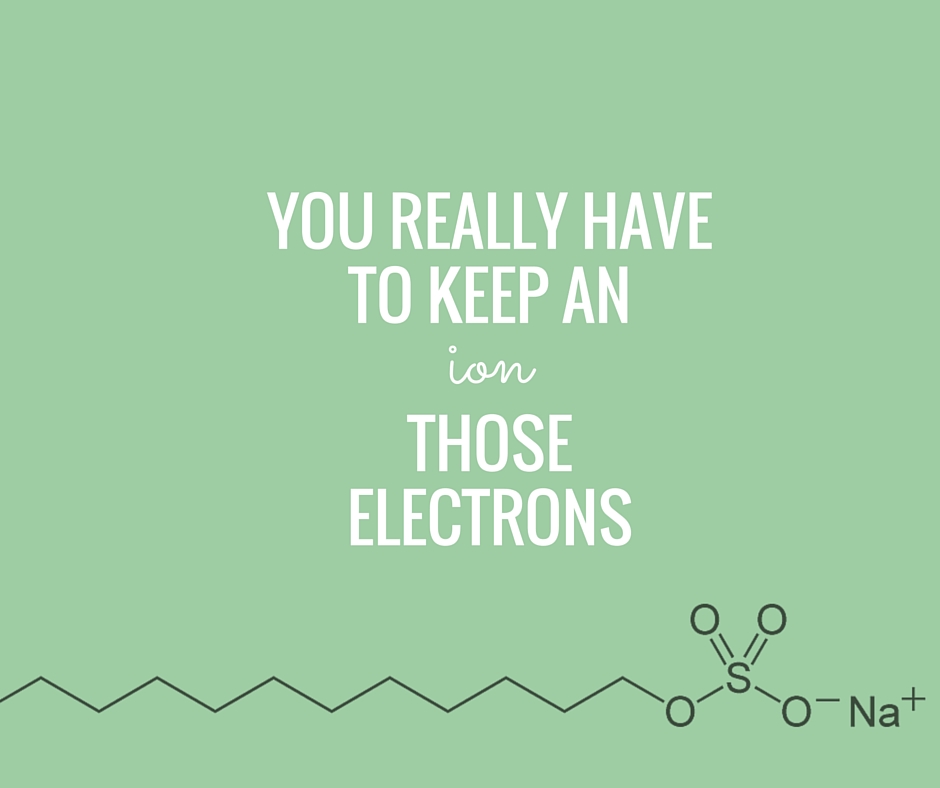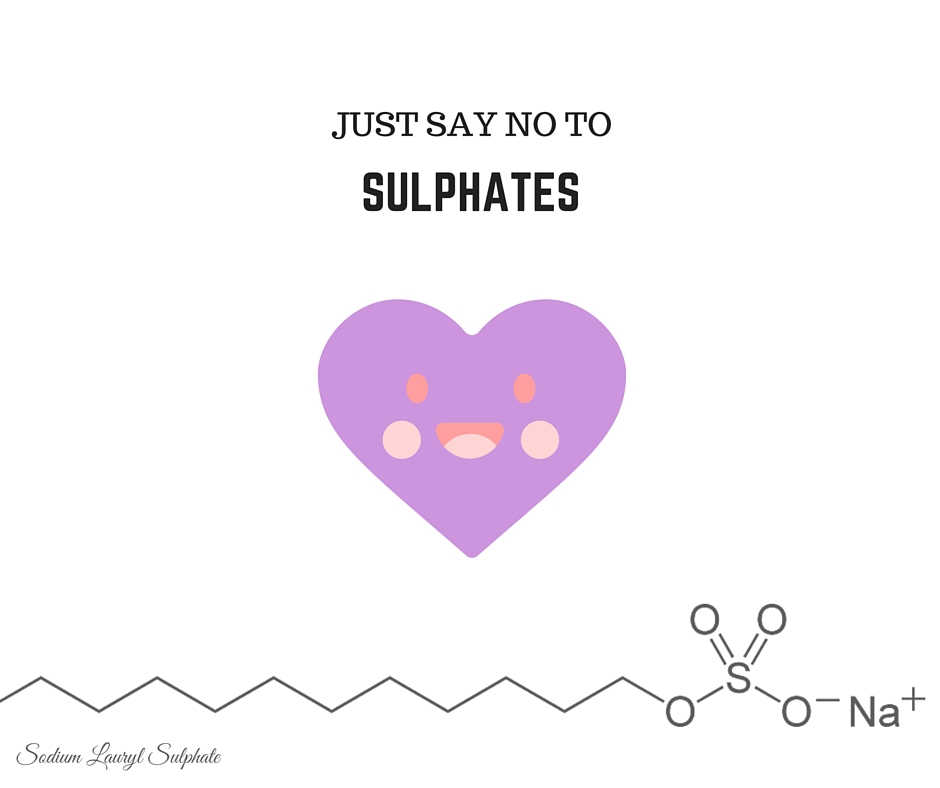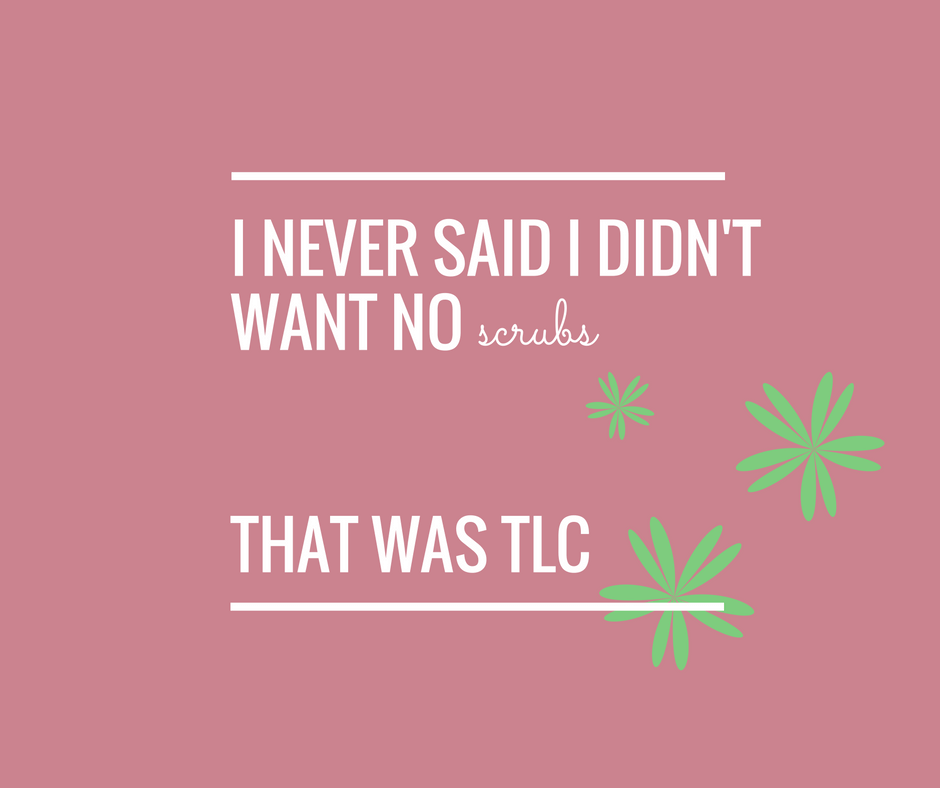As consumers, we need to ask ourselves whether the cosmetics and personal care products we and our families use every day are more important to us than our long term health. We also need to ask ourselves if there are products we can do without. Cutting down on the number of products we use and making our own chemical free products will reduce our exposure to toxins, save money and cut down on the amount of chemicals polluting the earth.
Ingredients in cosmetics and personal care items are not subjected to stringent pre-market evaluations and processes. In fact cosmetic companies are not required to submit any information on the harmful effects of their ingredients—this is a voluntary process. Through this system, virtually any product, regardless of safety, can be sold to the public.
This week we are looking at one very common ingredient that pop up in a host of cosmetic products that you may be using every day, unaware of its potential dangers, and that is Sodium Lauryl Sulphate (SLS). This one is heavy on the technical info so if you get your notepad out…or just trust us and avoid SLS!
SLS is a foaming agent and one of the most commonly used chemicals in skin, hair, body and household products. There are hundreds of scientific articles highlighting its toxicity. It readily penetrates the dermis (this is the second skin layer, found under the epidermis, or first layer of skin.) SLS is that chemical used in many cleaning agents; car wash soaps, garage floor cleaners, engine degreasers and 90% of all foam producing products like detergents, shampoo and conditioners, cleansers, body washes – in fact most household personal and home care items. Health hazards caused by SLS include tissue damage that may result in liver, brain, heart and lung damage in the long term; eye damage; degradation of the immune system; severe skin irritation; hair loss and eczema. When absorbed through the skin, SLS maintains residual levels in the heart, liver, lungs and brain, and it accumulates with usage.
The skin is most vulnerable to SLS, as skin tissue, especially in the region of the mouth, readily absorbs it. Many products containing SLS are products that are applied directly onto the skin. When combined with the fact that SLS remains in the biological system for up to 5 days (after each usage) – it is obviously a chemical to be avoided.
SLS causes skin reddening, and at concentrations of greater than 0.02% is cytotoxic (kills cells). SLS irritant effects are caused by its capacity to denature proteins (break the bonds that hold protein chains together). If applied thickly, at concentrations of 1-2%, sodium lauryl sulphate may cause erythema, swelling, blistering and pustules.
A major health concern with SLS is the damage it can do to the eyes. SLS is rapidly taken up and accumulated in eye tissue where it is retained for up to 5 days. Exposure to the chemical when released from a cleaning agent (like shampoo, detergents etc etc etc), may cause eye tissue malformation and possibly cause damage to the protein formation in the eyes of young children and infants. Multiple exposures to SLS-containing cleaners and personal care products can also cause improper eye development and delays in the healing process of the cornea. In animal studies, the adverse effect on eyes is greatest in young animals. SLS has also been associated with the development of cataracts if it gets into the eyes.
SLS is used in toothpaste to create lather and bubbles. It causes microscopic damage to the mouth tissues, providing a protein-rich food source for bacteria which can lead to an increase in gum disease. The denaturing effect of SLS on the protective mucous layer in the mouth exposes underlying tissues and can cause recurrent mouth ulcers. Denaturing also leaves the gums and cheeks vulnerable to the irritant acids in food. The trial of a toothpaste made without SLS resulted in a 60% reduction in mouth ulcers. Injury to the protective mucous membranes in the mouth may increase their permeability to other compounds, resulting in more ulcers and also allowing a greater absorption of other toxins, such as fluoride. On the scalp, long-term exposure to SLS can cause hair loss due to corrosion of the hair follicles, as well as dandruff, a problem which is often treated with the use of more frequent shampooing. SLS is often added to give the impression that the shampoo is thick, rich and worth paying a high price for.
For the sake of your long term health – please read labels on products you and your family use regularly. There are safe natural alternatives – we have chemical free shampoo and conditioner bases in our store, as well as detergents, tooth powders, cleansers etc., take a look at our online shop or send me an e-mail and I will let you know how to create safe and beautiful alternatives that will save you money and safeguard your health.
Donna x



